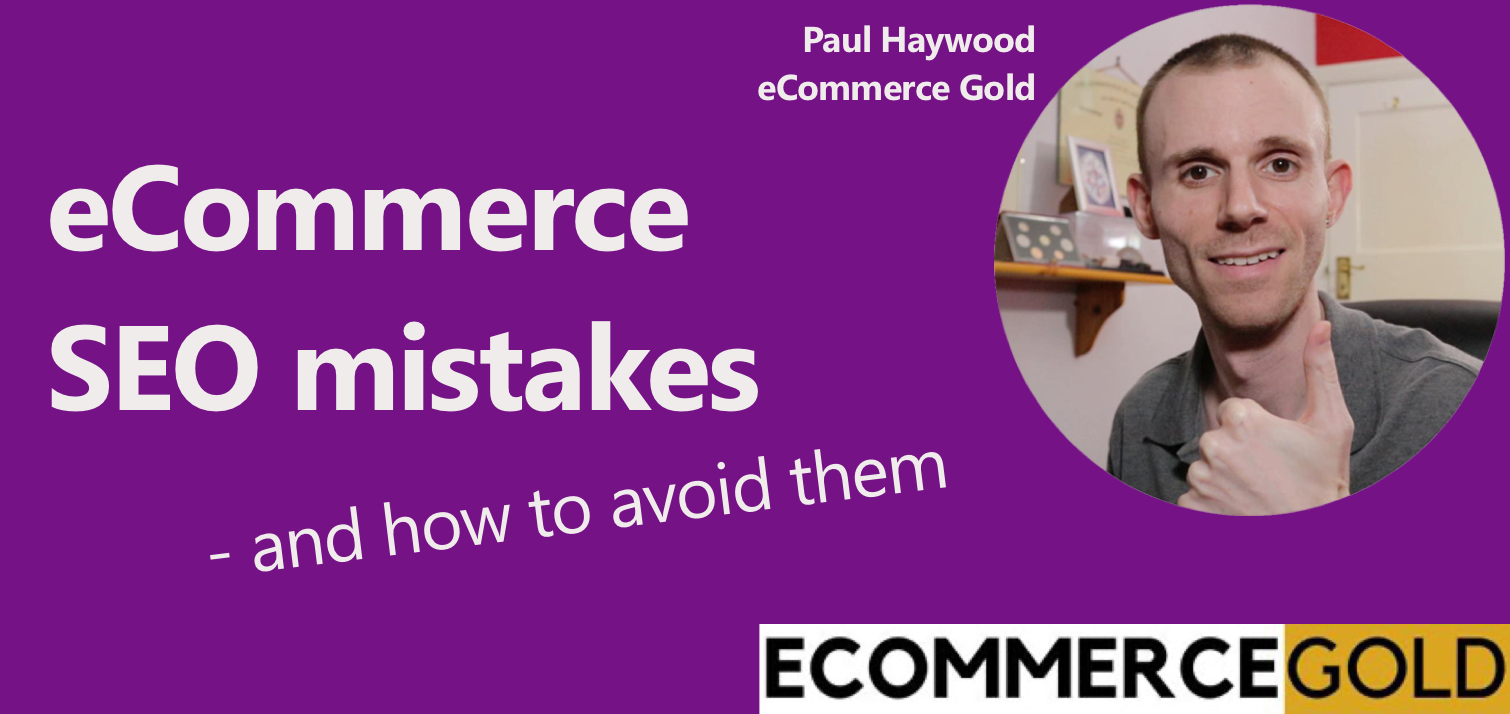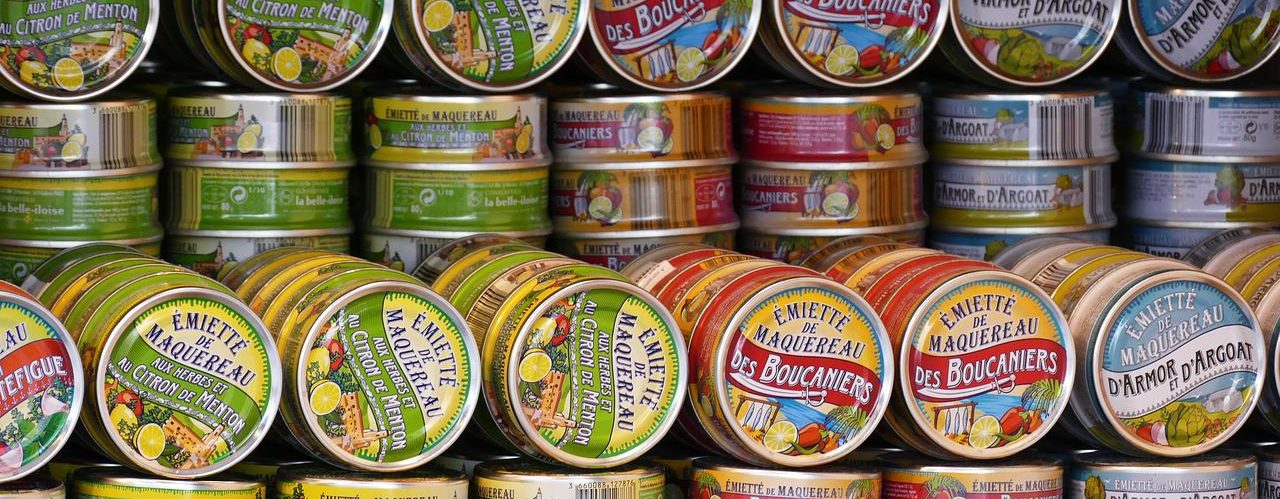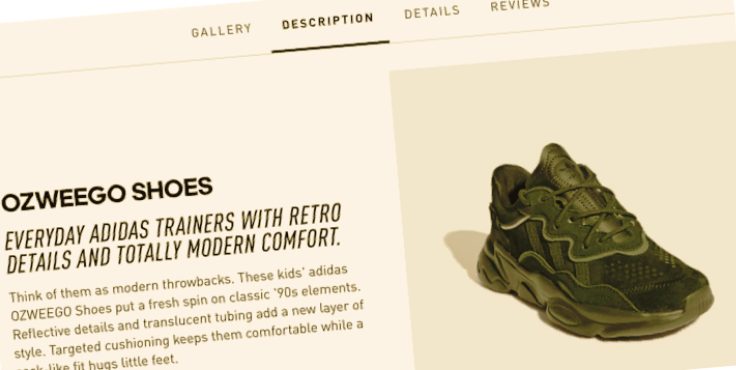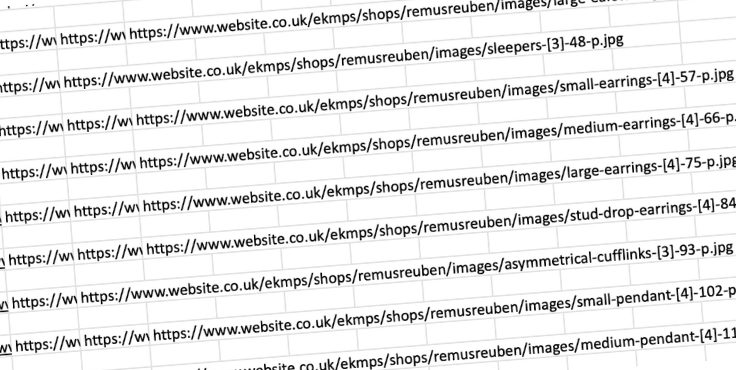
There are many different ways to market an ecommerce store but the one that is often the most profitable (according to 49% of digital marketers) is from organic traffic from search engines. It is also the best converting.
But how do you get traffic from organic traffic?
You need to optimise your site for search engines, more commonly called SEO (Search Engine Optimisation). But when it comes to SEO, there are a few common on-page mistakes that ecommerce websites make, that could be causing them to appear lower in search results than what they would like.
So what are these and how do you fix them?

1. Badly Written Product Titles
The product title is the main title for the page and should be the H1 tag, meaning it is the most important heading on the page and this helps search engines begin to understand what your page is about. Shopit already outputs your product titles as the H1 on the page.
However, many ecommerce website owners don’t spend time creating good product titles yet wonder why the page never gets any clicks. So when you are creating your titles, you want to:
- Create original product titles
- Include relevant keywords to the page or product
- Make it read naturally
A lot of the work around creating good titles comes down to doing effective keyword research, which is where you find the keywords that you want the page to rank for.
Next up, you want to create a unique product title that includes the main keyword or keywords that you want the page to rank for but also make it so that it reads naturally, by this I mean have it read in a way that you would say it if you were describing it to someone, for example:
- Gucci Handbag Black Leather Ladies Gold Clasps – this doesn’t read naturally but contains keywords
- Ladies Gucci Handbag in Black Leather with Gold Clasps – same keywords but it reads naturally and is more descriptive
A well written product title can also increase click through rates (CTR), which is good for SEO as the more clicks a page gets, the more of a signal it is to search engines that this page is good. Just try and keep the page title to less than 60 characters as search engines generally cut them off if they are longer.

2. Unfriendly URLs
URLs are another important part of SEO as not only are they the address of the page but they are another opportunity to add in keywords, which once again, helps search engines understand what the page is about.
That is why it can be good practice to have your URLs read in a similar way or potentially be the same as your page titles as it maintains the context of the page.
Avoid creating generic URLs such as yourdomain.com/ladies-gucci-bag-1 as this has very little SEO benefit when compared to yourdomain.com/ladies-gucci-handbag-black-leather-with-gold-clasps, which includes keywords, is descriptive and matches up well with the rest of the page.
Within Shopit you can easily customise your urls (and when changing them, we will automatically create a search engine friendly 301 redirect, from the previous to the new url).

3. Using Manufacturers Description (Duplicate Content)
Product pages aren’t content heavy pages and that is why you want to make the most of the content that you do have on the page and the largest single part of written content will usually be the product description.
And this is where one of the biggest on-page SEO mistakes happens as a lot of ecommerce businesses just copy and paste the manufacturers description and publish the product but this really isn’t good from an SEO standpoint.
This is because search engines will see this as duplicate content as there could be 10’s or even 100’s of sites using the exact same description and you don’t want duplicate content on your site.
Instead you want to create original, well written product descriptions that include relevant keywords but are concise and descriptive.
A well written product description can also increase conversion rates, especially if you include all the information that customers need in order to decide whether that product is right for them or not. Here are some tips for writing a good product description:
- Keep sentences and paragraphs short and to the point, people don’t want to read through big blocks of text to find the info they need
- List important information such as specifics in bullet points, this makes them easier to find and read
- Keep the information relevant to the product
By creating original descriptions, you help your product page stand out from the crowd and as search engines can pull snippets from descriptions when displaying results, you may find that you start appearing not only higher in search but also for more search queries.
If you’re utilising Shopits native multi site feature, you can easily create different product descriptions per sales channel, meaning you can avoid duplicate content issues across all your sites.

4. Missing Meta Descriptions
It is quite surprising how many product pages don’t have a meta description and while they don’t carry anywhere near the weight they used to when it comes to SEO, they are still worth writing, this is because it is another opportunity to add keywords to your page and you can include a call to action.
If you aren’t sure what a meta description is, it is a short description (upto 150-160 characters) of what the page is about and in many cases is displayed under the title and URL in SERPs.
When you are writing your meta description, think how could you sell that product in 160 characters or less? This is basically what a meta description is, a mini sales pitch as you are trying to get people to click on your page.
But what if you leave the meta description blank?
Well search engines will in many cases use the first 160ish characters of your product description and while this is ok if you have a well written product description, it is still better to craft a proper meta description.
Shopit offers every merchant the ability to completely customise your meta data, and make it different for each sales channel you launch.

5. Not Naming Product Images Properly
Your product images also form part of your page’s SEO and one of the simplest mistakes is to not give your image the correct name and this is something you do before you even upload it to your site.
When the image is still on your computer, simply rename the image so that it fits with the rest of your product page and keeping with the Gucci handbag example from above, some will even keep the original file name such as IMG1234, which has no SEO benefit at all or maybe say gucci-handbag1, which has very little SEO benefit.
Instead you want to name the image just like you name the page, so make sure that the image name is similar or even the same as the page, so you would name the main product image ladies-gucci-handbag-black-leather-with-gold-clasps.
There are a couple of reasons why doing this can be beneficial to your sites SEO:
- It once again helps search engines know what the page is about as the image title now contains relevant keywords
- It increases the chances that your product images appear in image search results, which can be a good source of traffic
- It is most important to do this to your main product image but doing it is good practice to do this to all of your product images.

6. Missing Alt Tags From Images
The second SEO mistake when it comes to product images is to not add an alt tag.
If you are not sure what an alt tag is, it is a HTML element that gives a text description for an image, so if your image doesn’t display for some reason the alt tag will tell the viewer what the description of the image is. Alt tags can also be used by screen readers to describe what is on the page to visually impaired visitors.
So alt tags can be very useful as along with the image name, it helps search engines understand what the page is about and is another chance to add keywords to your page.
Now alt tags don’t need to be in-depth descriptions, they are short descriptions of a few words as to what the image is and if you have named the image properly, the alt tag will be very similar to the image name.
Conclusion
On-page SEO is just one of the elements of Ecommerce SEO but it does play an important factor as when you optimise your on-page elements, it can improve your Search Rankings and Click Through Rate, it can also have an impact on Bounce Rate.
You may have spotted a recurring theme through these mistakes, which is letting search engines know what your page is about and that is very much what the goal of on-page SEO is all about.
This is because if you don’t provide search engines with any information, they aren’t going to know who to show your page to and this means that they just won’t show it and will instead show results that they feel better match the search query, so provide them with the information and show them what keywords you want the page to rank for.
Another thing you may have spotted is that the way you write things is also important and you want to write in a way that is aimed at both search engines and the people behind the screen, this can be challenging but when done right can be very beneficial as you should rank better but also provide a good user experience for your potential customers.

Guest author Paul Haywood – the owner and founder of EcommerceGold – is a former eComemrce site owner and now writes the kind of articles he wished he had available when he was a merchant.